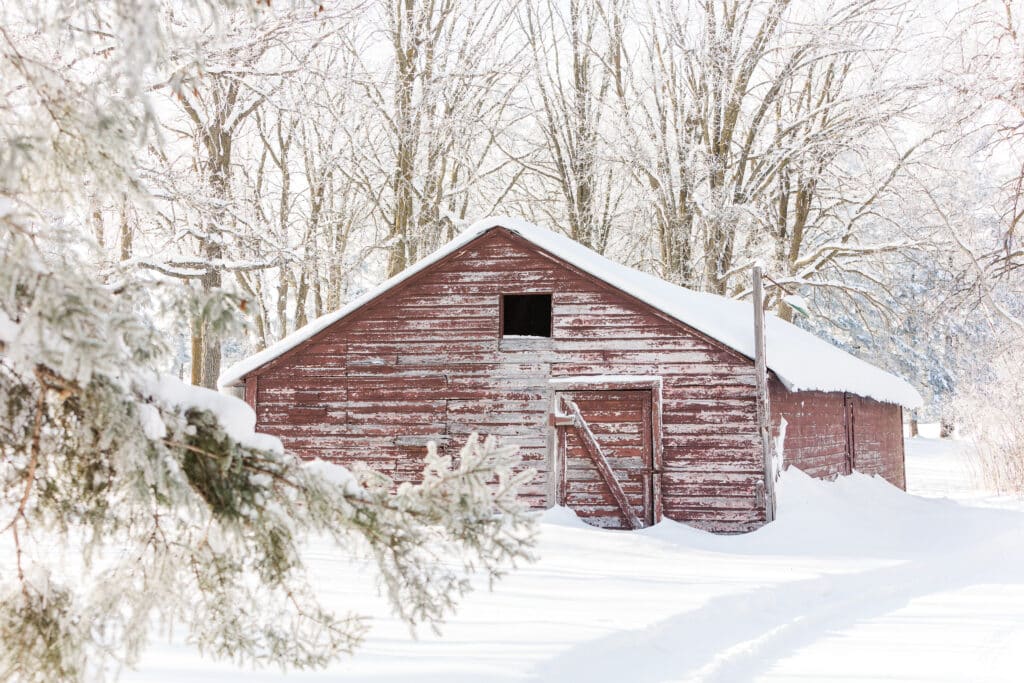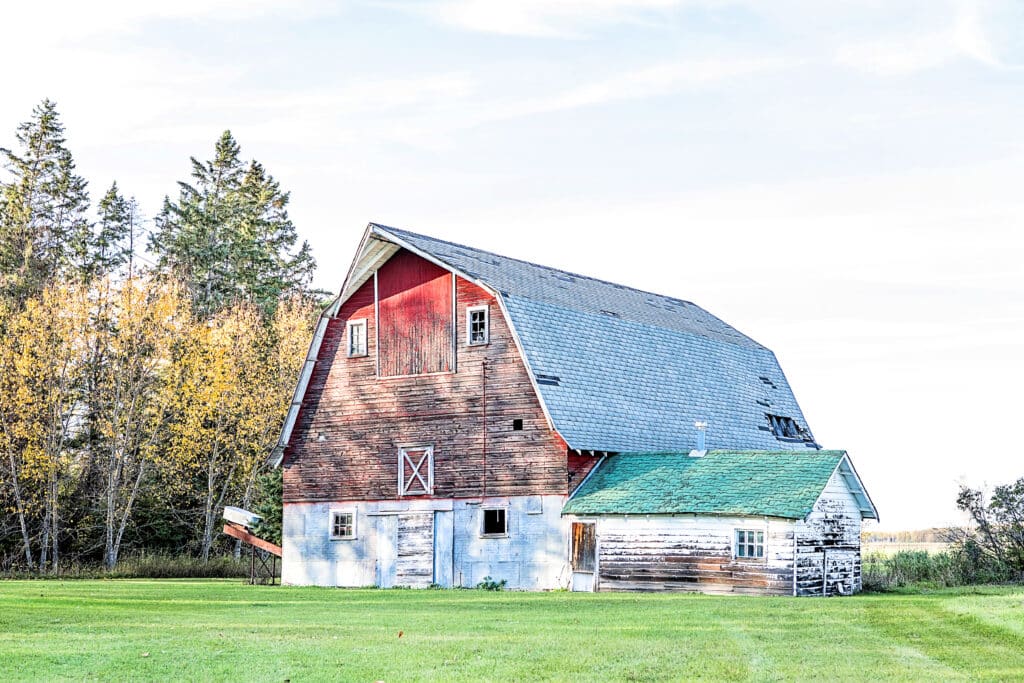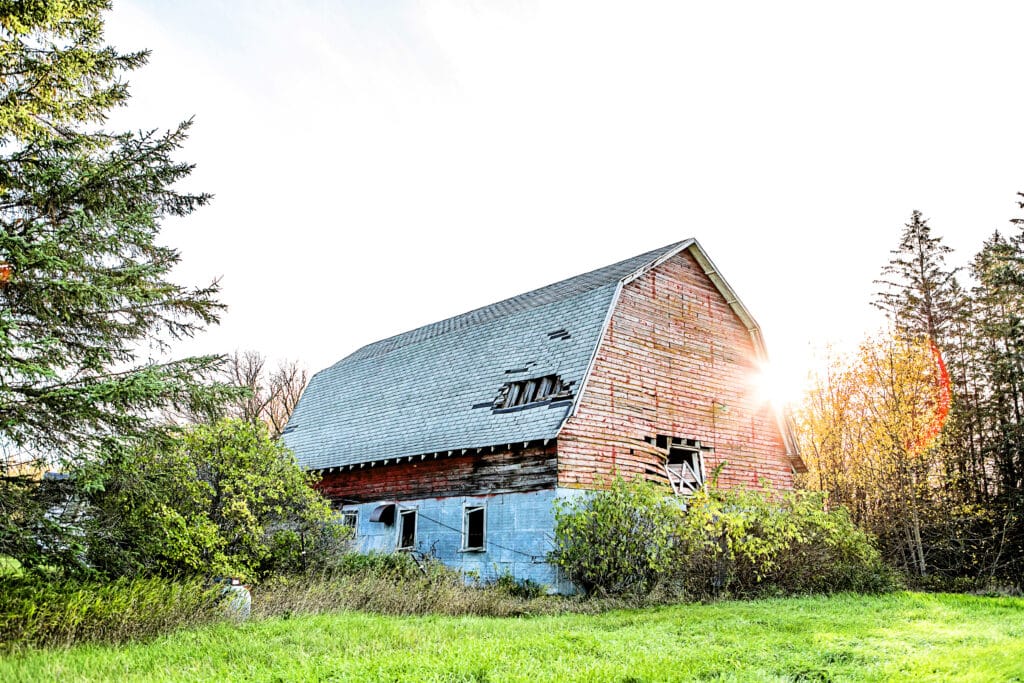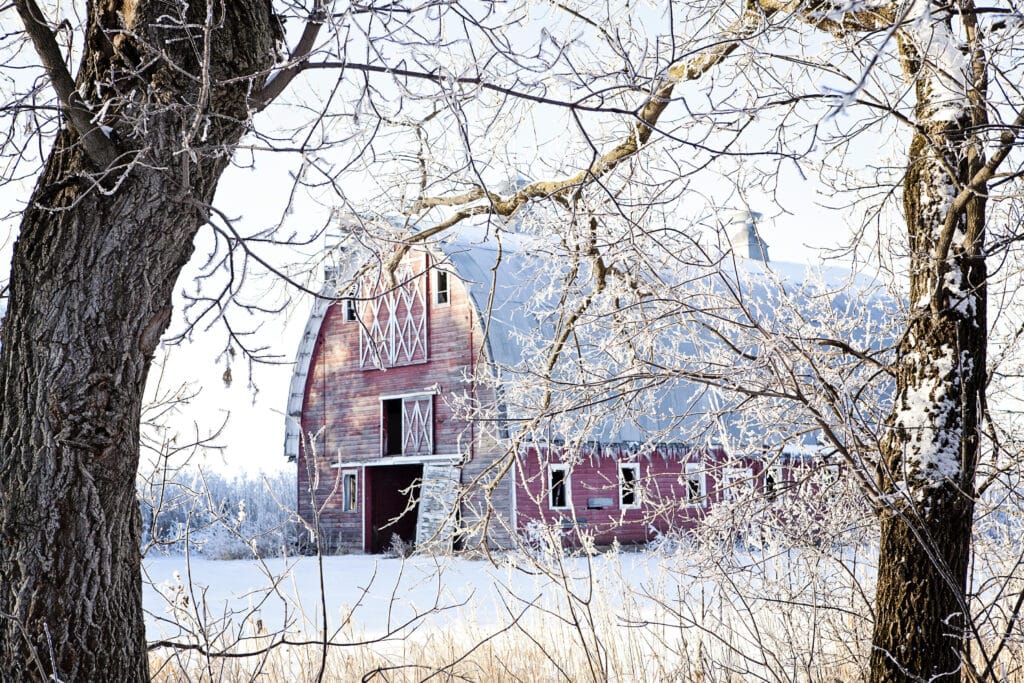Red-painted barns are an icon across the Northeast and the Midwest. In keeping with tradition, these red barns often sit alongside a stark white farmhouse, providing a contrast against farmland. Their old bones are getting tired and showing their age, but they are still as beautiful today as when they were first built. Let’s look at some of the majestic old barns of Roseau County.

The red barn is an icon of rural America. These are one of the few distinctly American structures borne from our earliest days in history. Settlers adapted the European barn to serve our extensive livestock and agricultural needs. Today, new and historic barns serve many different purposes, remaining a vital part of rural American culture. In Roseau County, modern farming methods sit beside hundreds of year-old barns. Rust-covered Silos still have a place next to the hundreds of thousands of dollars silos of today. They complement each other well, a sign of farming and agricultural growth and development through the years.

You can travel the farmlands and back roads across Roseau County and see the old red barns in all their glory. There are more than a dozen scattered on farms in the county, and they are beautiful in any season. A drive down back roads, many unpaved, will lead you to these treasures of America’s past. Many generations of farm families have worked the land and livestock and still live on the homesteads. We recently polled Roseau residents; some have been in the county for 5 to 6 generations. Their names are often proudly displayed on the farmland signage. If you make a road trip, travel through the townships of Falun, Enstrom, Spruce, and Malung. The barns stand tall and proud and can be observed from the road without pestering the landowners.

These old barns have served many purposes over the years. One Roseau resident recalls Arne and Luella Erickson’s barn in Falun as quite the hub for activities in the past. Many dances, live bands, firework shows, potlucks, or just cups of coffee with friends were experienced there. If you ask them about their younger years in the barns, old timers get a twinkle in their eye. They were an excellent place for shenanigans and meeting with neighborhood kids or a love interest. It’s best that walls can’t talk in many cases, but we all know these barns have stories. Some stories are shared, and others are a best-kept secret.

Why are the barns red? There are a couple of theories on why red is the predominant color of barns. Historically, barns were duller orange-red, not the bright red seen on barns today. The tint came from a linseed oil mixture that seals barns after construction. Some farmers added rust – ferrous oxide – to the solution to keep the barns from developing moisture and mold in the wood. The addition of rust to the mixture tinged it red.

Old barns hold more than a rich history sitting on their warped wood. They have stories, love, memories, a past purpose, and more. Many of these iconic barns still stand in Roseau County, and many more are fighting to stand. Because of this, we invite you to visit Roseau and take in the barns of its past. Make your next road trip to Roseau County for the full backroads and barn experience.
